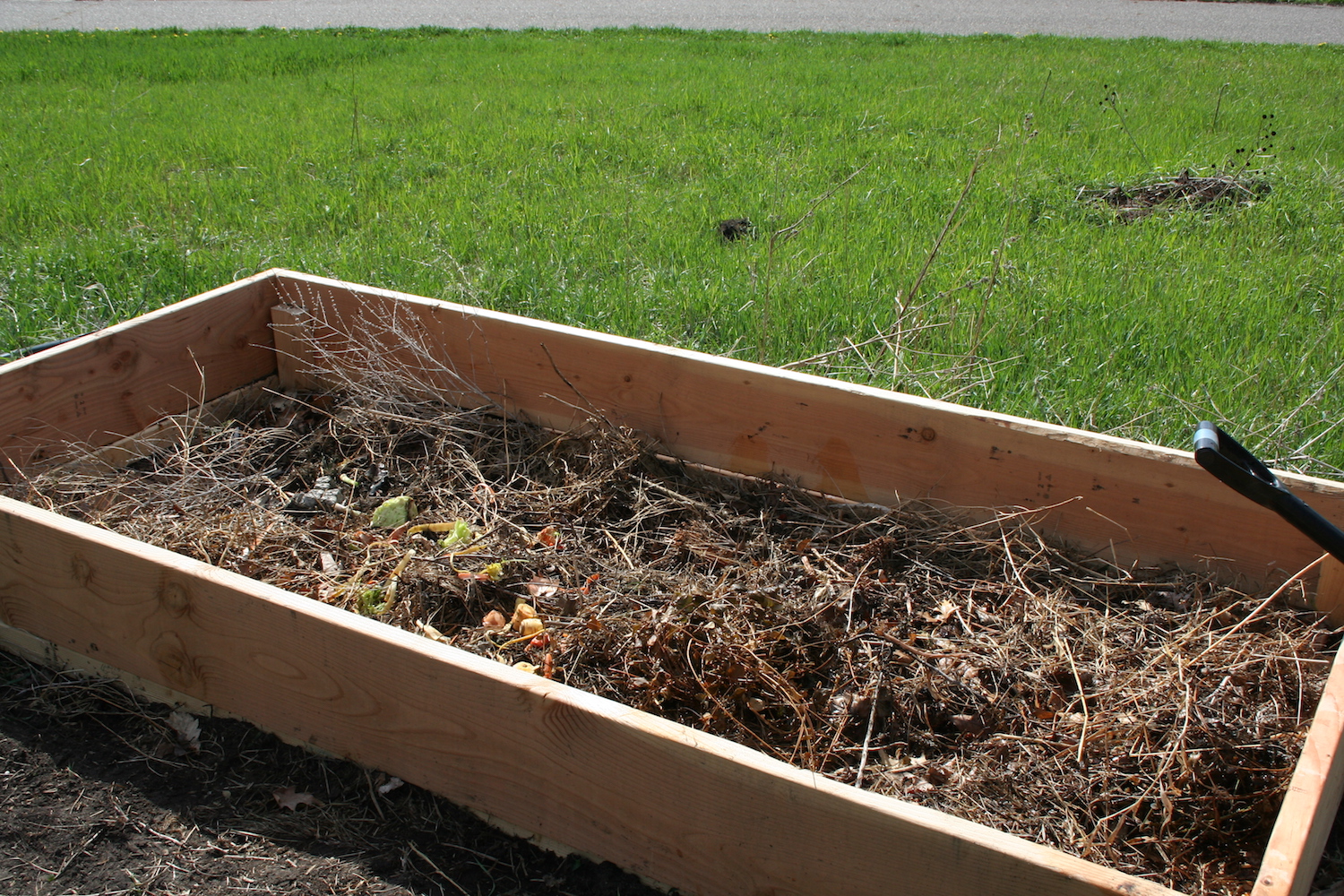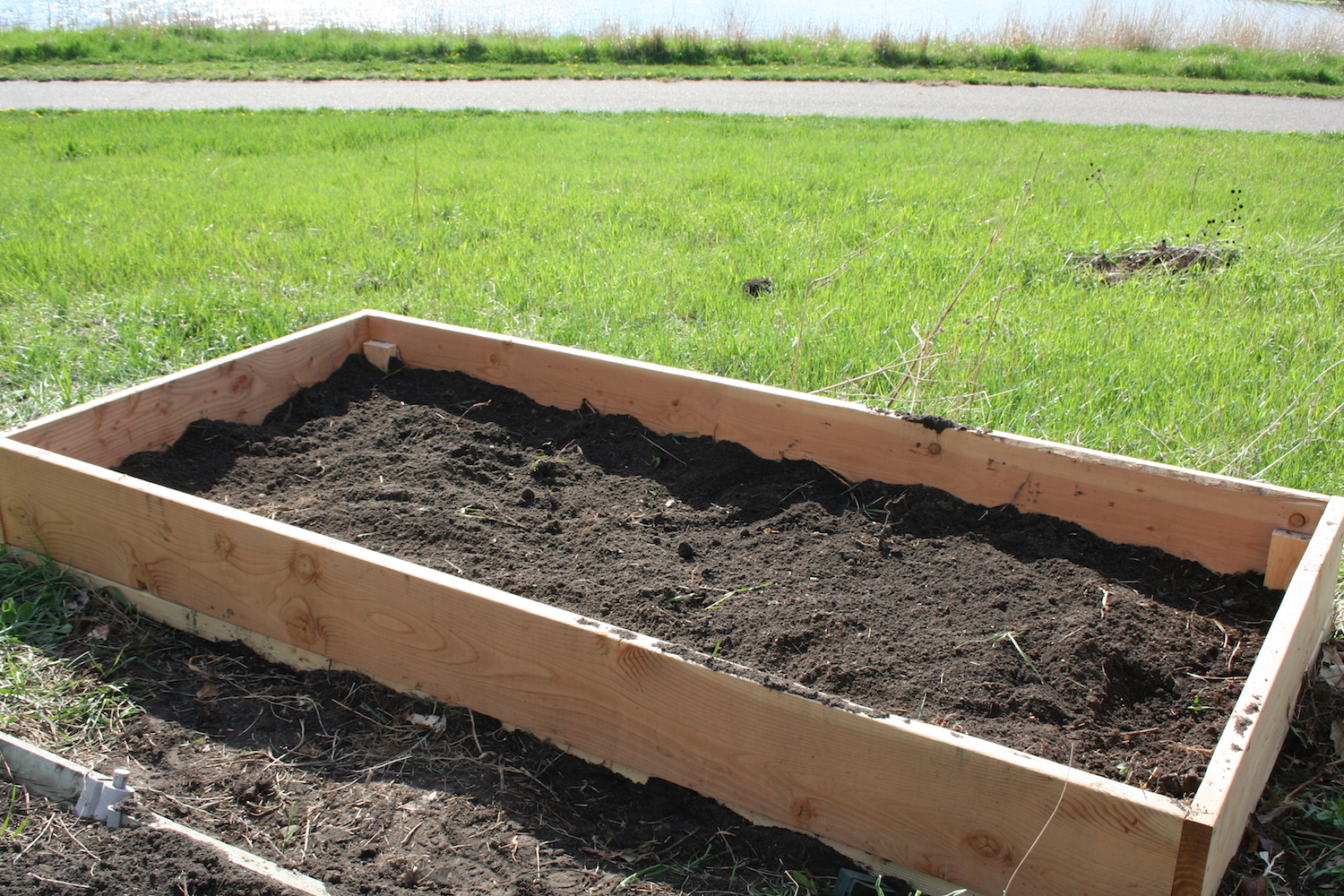Lasagna gardening is a no-till method of starting a garden — usually one for vegetables — that produces humus-rich soil, the ideal environment for “heavy feeders” such as tomatoes. The basic idea is that you layer materials that normally would go into compost to create your garden bed. Like lasagna, the garden has several types of layers and, after it cooks, the layers shrink and blend into each other.
For my newest raised bed, I decided to use the lasagna garden method. In a perfect world, the bed would have been installed and filled last fall, so it would have all winter to sit and percolate. Since that didn’t happen, I added some black dirt and plenty of finished compost to the lasagna garden. To install the garden, I mowed the area where the bed was going to go — it’s near a meadow at the rear of my yard — then set the raised bed in place. Next, I covered the inside of the bed with brown cardboard and wet it thoroughly.
On top of that, I added a bunch of partially finished compost from my pile, then a layer of finished compost from the city compost pile, then a layer of leaves, spent perennials, and other material I collected during garden clean-up this spring. In between each layer, I hosed it down more. So far, I have not spent a cent.
Because I will be planting this bed shortly, I added a few bags of garden soil. This cost about $15. On top of that, I added another few inches of compost from the city compost pile. I built the bed off-and-on over two weeks starting in mid-April and have been letting it sit since then. Yesterday, I added some marigold starts around the edge of the bed for color and to encourage good pollinators to frequent my garden. Around June 1, I will plant my tomatoes in the bed. At the end of this season, I’ll add some additional layers to continue to build the soil in the bed.
Will tomatoes grow as well here as they have in my regular garden beds? I’ll let you know.



Mary, when we visited your garden a couple of weeks ago I was inspired by your plans for the “lasagna” bed, so I made one myself yesterday out of an existing raised bed. The soil in it needed to be reworked anyway, so I dug it all out and am adding layers one by one. I was amazed by how much material I had accumulated so I was able to fill it easily. In fact I could have filled several of them..